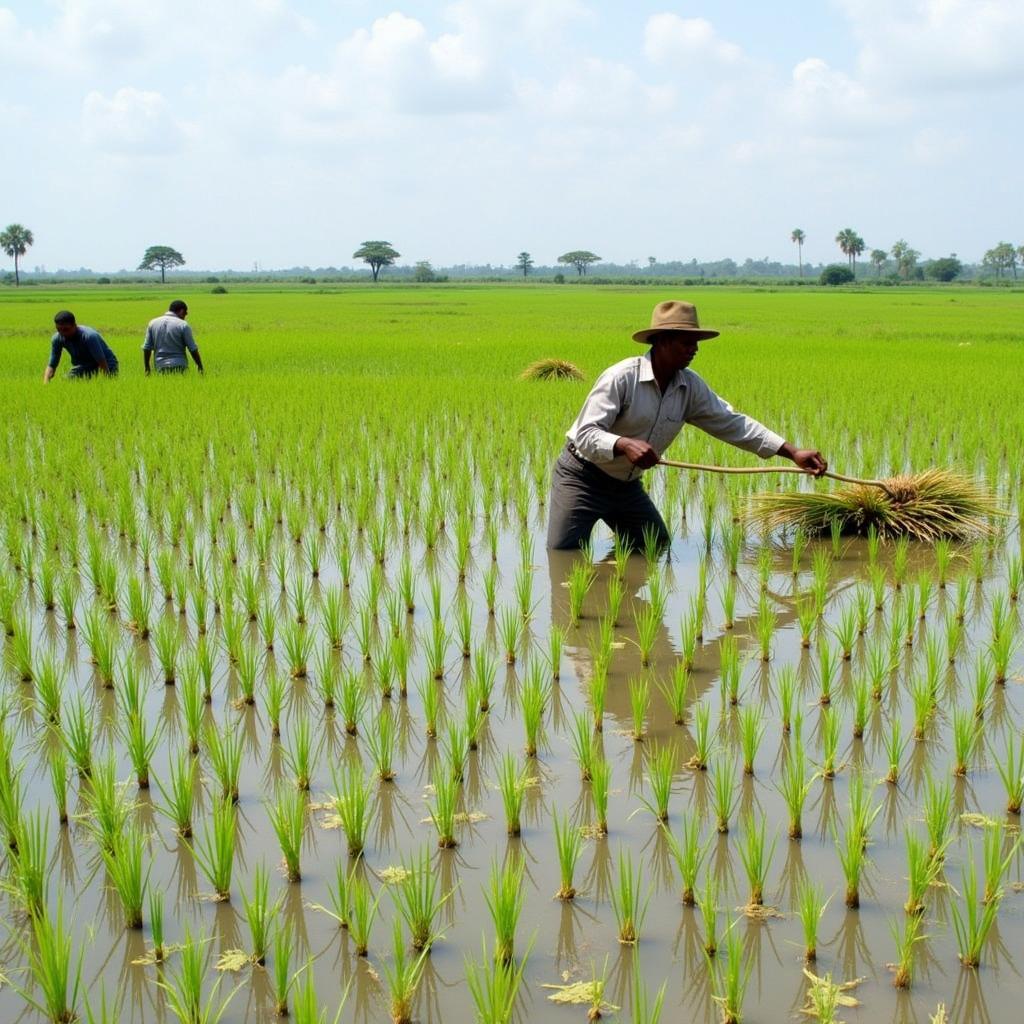African Kids Funny Dance: A Celebration of Joy and Culture
African Kids Funny Dance videos are a global phenomenon, spreading laughter and joy while offering a glimpse into the rich tapestry of African cultures. These captivating performances showcase not just impressive rhythm and coordination but also the vibrant spirit of childhood across the continent. From traditional moves passed down through generations to spontaneous bursts of creativity, these dances are a testament to the power of music and movement to connect us all. Check out some African funny clips.
The Rhythm of Life: Exploring African Kids’ Dance
African dance is deeply intertwined with the fabric of daily life, serving as a powerful form of expression, storytelling, and social bonding. For children, dance is an integral part of their upbringing, a way to learn about their heritage and connect with their communities. They mimic the movements of their elders, absorbing the rhythms and nuances of various traditional dances. These dances often tell stories of daily life, celebrate harvests, mark important milestones, or simply express the sheer joy of being alive.
What makes these dances so captivating is their infectious energy and spontaneity. Children often improvise and add their own personal flair, resulting in unique and hilarious performances. These unscripted moments of pure joy are what often capture the hearts of viewers worldwide.
Why Are African Kids Funny Dance Videos So Popular?
The popularity of these videos can be attributed to several factors. First and foremost, they are genuinely entertaining. The children’s natural charisma, combined with their impressive dance skills and often unexpected moves, makes for captivating viewing. These videos offer a lighthearted escape from the stresses of daily life, reminding us of the simple joys of childhood. Secondly, they provide a window into a different culture, showcasing the beauty and diversity of African traditions. For many viewers, these videos are an introduction to the rich tapestry of African music and dance, sparking curiosity and appreciation.
Beyond the entertainment value, these videos also highlight the importance of cultural preservation. By sharing these dances online, children are not only entertaining a global audience but also contributing to the preservation of their cultural heritage for future generations. These dances are living traditions, passed down through generations, and these videos serve as a digital archive of these invaluable cultural expressions. You can see more on African cute kids.
More Than Just Entertainment: The Cultural Significance
African dance is more than just entertainment; it’s a powerful form of communication. Each movement, each gesture, tells a story, conveying emotions, traditions, and values. These dances often have deep spiritual and symbolic meanings, reflecting the connection between humans and nature, the ancestors, and the community. For example, some dances celebrate harvests, while others honor important figures or mark rites of passage.
Children learn these dances from a young age, absorbing not only the physical movements but also the cultural significance behind them. This intergenerational transmission of knowledge is crucial for maintaining cultural continuity and strengthening community bonds. The dances also promote important values such as teamwork, discipline, and respect for elders. Sharing these dances with the world allows African children to express their pride in their culture and share their heritage with a global audience.
What Makes These Dances Unique?
African dance is characterized by its rhythmic complexity, intricate footwork, and dynamic movements. It often involves the entire body, from the head and shoulders to the hips and feet. The use of polyrhythms, where multiple rhythms are played simultaneously, creates a vibrant and layered soundscape. These rhythmic intricacies are a hallmark of African music and dance, distinguishing it from other dance forms around the world.
Many traditional African dances also involve the use of props, such as masks, costumes, and instruments. These elements add another layer of meaning to the performance, enhancing the storytelling and visual spectacle. For example, masks are often used to represent spirits or ancestors, while costumes can signify social status or group affiliation.
Dr. Ayo Adebanjo, a renowned ethnomusicologist, notes, “African children’s dance is a window into the soul of a community. It reflects their values, their history, and their connection to the land.”
The Future of African Kids Funny Dance Videos
With the increasing accessibility of the internet and social media, these videos are likely to continue captivating audiences worldwide. They offer a unique blend of entertainment, cultural insight, and pure joy. As more people discover these videos, they will undoubtedly contribute to a greater appreciation of African cultures and the importance of preserving traditional art forms. Watch more African dance video funny.
Conclusion
African kids funny dance videos are more than just viral sensations; they are a celebration of joy, culture, and the vibrant spirit of childhood. They offer a glimpse into the rich tapestry of African traditions, reminding us of the power of music and dance to connect us all. These videos are a testament to the enduring power of cultural expression and the importance of preserving these traditions for future generations. So, the next time you see one of these videos, take a moment to appreciate the talent, energy, and cultural richness on display. Perhaps you’ll even be inspired to learn a few moves yourself! African kids funny dance continues to spread joy and cultural awareness globally.
FAQ
- What are the most common types of African kids’ dances?
- How do these dances contribute to cultural preservation?
- What is the significance of music in African dance?
- How can I learn more about African dance traditions?
- Are there any online resources for learning African dances?
- What are some examples of traditional African musical instruments used in these dances?
- How do African dance traditions differ across regions and countries?
Need assistance? Contact us 24/7: Phone: +255768904061, Email: [email protected], or visit us at Mbarali DC Mawindi, Kangaga, Tanzania.
